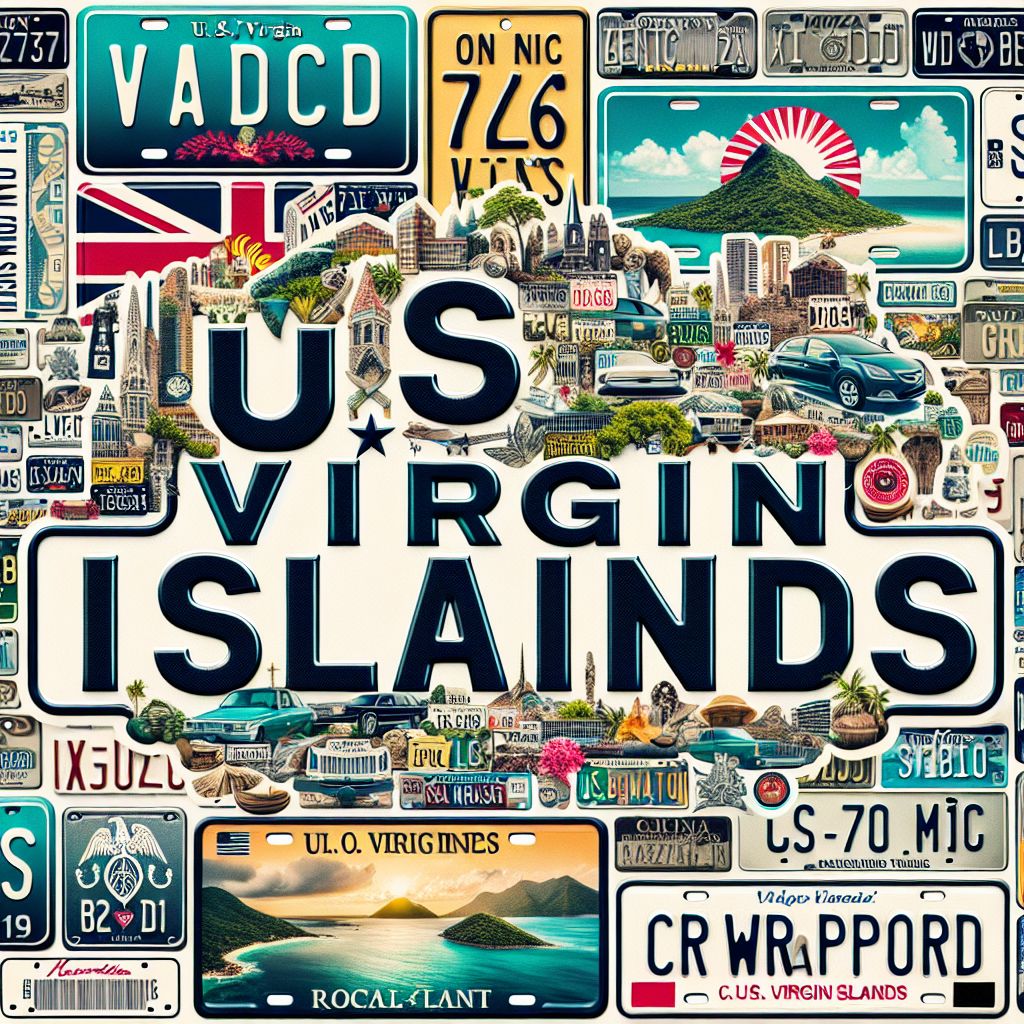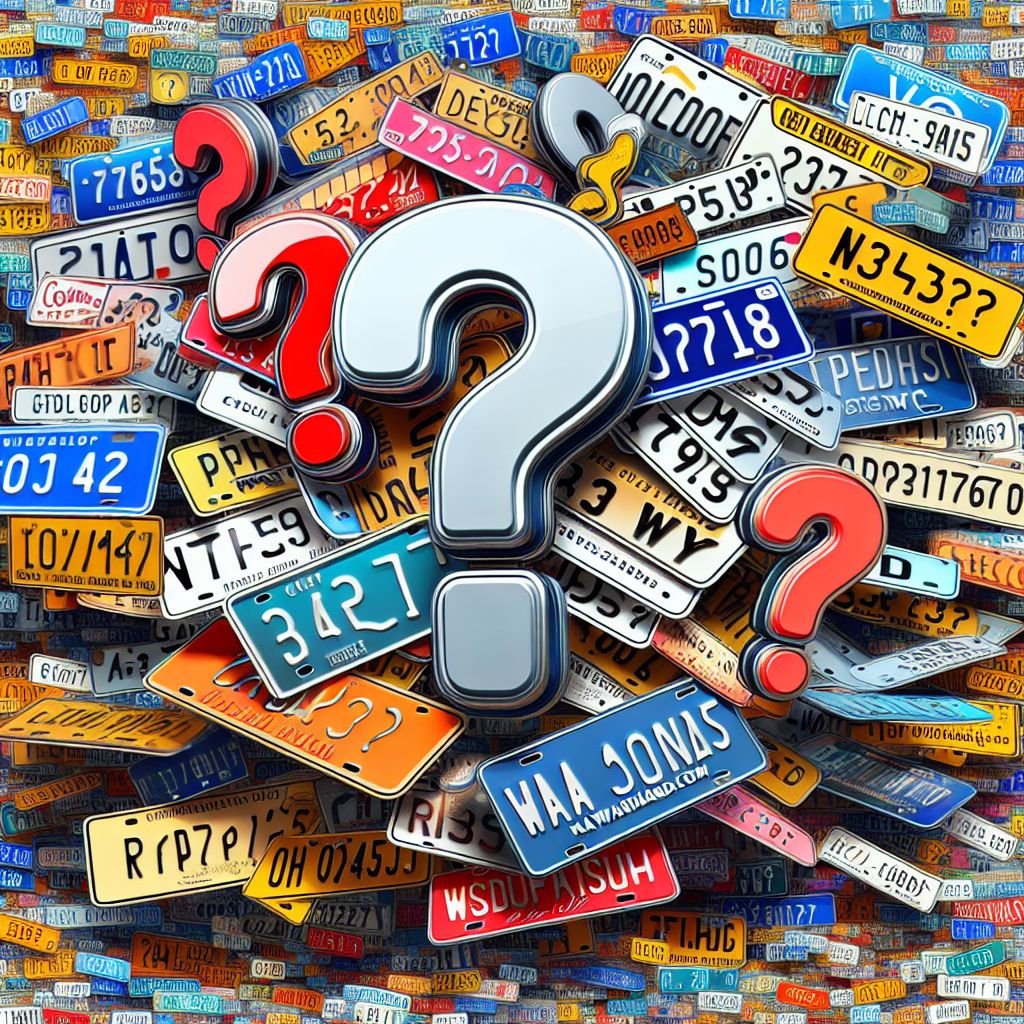
Key Takeaways
- In the U.S. Virgin Islands, both front and back license plates are mandatory and must be clearly visible.
- License plate frames and wraps must not obstruct any part of the plate, including registration stickers and state name.
- Front license plate wraps are permissible if they are obtained through an approved vendor and meet specific requirements.
- Selling license plate frames that obscure plate information is illegal, and sellers must inform buyers of this law.
- Non-compliance with license plate laws can result in fines and penalties.
Stay Legal on the Road: U.S. Virgin Islands’ License Plate Essentials
Driving around with the breeze in your hair is one of the joys of the U.S. Virgin Islands, but let’s make sure your ride is street-legal. License plates aren’t just for looks – they’re a legal requirement. Stick with me, and I’ll walk you through the do’s and don’ts of license plate display, wraps, and frames in the USVI.
Front Plate Requirement: Know the Rules
If you’re cruising around the islands, you’ll need a front license plate. But not just any plate will do. It has to be official, and it must be visible. That means no fancy covers or dark tints that make it hard to read. Why? Because your plate’s job is to be seen, so that everyone, including law enforcement, can easily identify your vehicle.
- Ensure the plate is mounted on the front of the vehicle.
- Keep it unobstructed and clean for visibility.
- Avoid any wraps or covers that the BMV doesn’t approve.
Now, you might be wondering about wraps. Yes, you can wrap your front plate, but only with materials from approved vendors that make sure the plate is still reflective and legible. Stick to the rules, and you’ll be good to go.
Back Plate Requirement: Ensuring Visibility
The back plate has the same visibility rules as the front. It’s got to be clear for all to see – no ifs, ands, or buts. Frames can add a personal touch, but if they cover any part of the plate, like the registration sticker or the “U.S. Virgin Islands” text, they’re a no-go. Keep it simple and keep it legal.
- Back plates must be fully visible, with no part of the plate obscured.
- Frames and covers should not cover any information on the plate.
- Regularly check your plate for dirt or damage that could obscure it.
Remember, the goal here is to avoid any run-ins with the law. So, if you’re thinking about jazzing up your plate, think twice about how it could affect visibility.
Key Points on Custom Plates: What You Need to Know
Custom plates can add a unique flair to your vehicle, but they still have to follow the rules. When applying for a personalized plate, make sure the design is approved and doesn’t infringe on the visibility guidelines. Once you’ve got your snazzy new plate, treat it like any other – keep it clear and easily readable.
Using Wraps and Tints: Dos and Don’ts
Wraps and tints can make your car stand out, but there’s a fine line between cool and illegal. Here’s the deal: front plate wraps are okay if they’re BMV-approved. As for tints, steer clear of anything that dims or obscures your plates. Always err on the side of caution – if you think it might be too dark, it probably is.
Penalties and Consequences of Non-compliance
Ignoring these laws can hit you where it hurts – your wallet. Fines for obscured or improperly displayed plates can be steep. And it’s not just about the money; it’s about keeping everyone on the road safe, including you. So, make sure your plates are up to par to avoid any unnecessary headaches.
- Check your plates regularly to ensure they comply with visibility requirements.
- Understand that non-compliance can lead to fines and even vehicle impoundment in severe cases.
- Stay informed about any changes to the laws to ensure ongoing compliance.
Essential License Plate Guidelines for Vehicle Owners in the USVI
Before you hit the road, it’s crucial to ensure your vehicle’s plates are properly attached. A loose plate can become a road hazard, not to mention it’s against the law to have it flapping in the wind. So grab a screwdriver and make sure those plates are snug and secure.
But it’s not just about attachment; maintenance is key. Your plates face the brunt of the weather, and in the U.S. Virgin Islands, that can mean salty sea air and tropical storms. Keep them clean and legible. A dirty plate can be just as bad as no plate at all when it comes to visibility for law enforcement and fellow drivers.
Secure Your Plates: Attachment and Maintenance Tips
Here’s a pro tip: use anti-theft screws to secure your plates. It’s a small investment that protects your plates from getting stolen. Also, give your plates a wipe-down now and then. Just a bit of soap and water will do the trick to keep them looking fresh and easy to read.
And if you’re using a frame, make sure it doesn’t cover any part of the plate. That means the numbers, letters, and even the little month and year stickers in the corner must be visible. It’s all about keeping your vehicle identifiable, for your safety and the safety of everyone on the road. Learn more about license plate laws and frames options.
The Right Fit: License Plate Size and Placement
Your license plates have to fit just right. They’re designed to be a certain size for a reason – to be read from a distance. That’s why the U.S. Virgin Islands has specific dimensions for license plates. Stick to the standard size, and you’ll be fine.
- Standard size for USVI license plates is 6 inches by 12 inches.
- Plates must be mounted at the front and rear of the vehicle.
- They should be at a height of not less than 12 inches from the ground to the bottom of the plate.
And here’s something else to keep in mind: the placement. Your plates should be smack dab in the middle of your bumper or designated plate area. Not off to the side, not tilted – centered and level. This makes it easier for cameras and the eyes of the law to spot your plate without a hitch.
Reflective Materials and Visibility: Safety First
When it comes to plates, visibility is the name of the game. That’s why they’re made with reflective materials. Even at night, your plates should shine bright under headlights so that anyone can see them clearly. This is a non-negotiable safety feature.

Customizing Your Vehicle: Personal Plates and Frames
Personalizing your vehicle can be a blast. Custom plates let you express yourself, and frames can add that extra oomph. But remember, customization has its limits. You’ve got to stay within the lines of the law.
Choosing Your Custom Plate: Steps to Apply
Want a custom plate? Here’s how to get it:
- Choose a unique combination of letters and numbers – make it catchy, but keep it clean.
- Fill out the application form from the USVI Bureau of Motor Vehicles (BMV).
- Pay the fee – it’s a bit more than a standard plate, but think of the style points!
- Wait for approval – the BMV has to make sure your choice is available and appropriate.
- Once approved, replace your old plates with the new ones, and you’re set!
Just like that, you’ve got a set of plates that are all you. But don’t forget, even custom plates have to be clear and visible. No getting fancy with fonts or colors that are hard to read.
Frame It Right: Legal Requirements for Plate Frames
Frames are like the cherry on top of your custom plate sundae. They can make your plates pop, but you’ve got to choose wisely. The frame should not cover any part of the plate. That includes the little “USVI” at the top and the sticker spaces at the bottom.
And here’s a tip: avoid frames with lots of bling. Reflective crystals and flashy decorations can distract other drivers and make your plate hard to read. Keep it classy and compliant.
Decals and Stickers: What’s Allowed?
Stickers can show off your personality, but there’s a place for them, and it’s not on your license plate. The only stickers that belong there are the official ones from the BMV – your registration stickers. Anything else is a no-no. So save those cool decals for your bumper or window, where they won’t get you in trouble.
Navigating the BMV Regulations: Wraps and Frames
Understanding the rules around wraps and frames can save you from a headache later on. Let’s break it down.
The Legal Perspective on Plate Wraps
Wraps can be a way to protect your plates and add some flair, but they must be BMV-approved. This means they’ve been checked to ensure they won’t affect the plate’s visibility or reflectivity. If you’re thinking about a wrap, check with the BMV first to make sure it’s on the up-and-up.
Understanding Frame Restrictions and Legal Parameters
Frames are a simpler way to customize your plate, but even they have rules. Most importantly, they can’t cover any part of the plate’s information. That means the registration sticker, the state name, and the plate number must all be fully visible. If your frame covers any of these, it’s time for a change.
And remember, if you’re selling frames, you’ve got to let your buyers know the legal deal. It’s actually required by law to post a sign telling customers that obscuring plate info is a no-go in the USVI. Keep it transparent, and you’ll keep it legal.
Ensuring your vehicle’s plates are up-to-date is crucial, especially when life throws a curveball like moving or switching cars. It’s simple: got a new address or a new ride? Head to the BMV to update your info. This way, you avoid any mix-ups with registration or legal issues down the road. Keep your plates current, and you’re golden.
Plus, it’s not just about legality. Accurate information on your plates can help you out in many situations, from traffic stops to tolls. So make the update part of your moving checklist or post-car purchase to-do’s. It’s a small step that can save you big problems later.
When to Update: Moving or Changing Vehicles
When you move to a new place within the USVI or buy a new car, don’t dilly-dally – update your plates. The BMV gives you a window to make these changes, so take note and act fast. It’s a bit of paperwork now to avoid a potential headache later.
And if you’re selling or scrapping your old vehicle, make sure to remove the plates. Those plates are tied to you, not the car. By removing them, you’re protecting yourself from any liability once the vehicle is no longer in your name. It’s a smart move for peace of mind.
U.S. Virgin Islands BMV Front & Back License Plate Rules
Reference:
https://bmv.vi.gov/

FAQs: Your Questions Answered
Is a front license plate required in the U.S. Virgin Islands?
Yes, indeed. Both front and back plates are required in the USVI. No front plate? You’re asking for trouble. Make sure you have both plates securely attached and visible to avoid any legal issues.
Some places might let you slide with just a back plate, but not here. The front plate is just as important for identification, especially in parking situations or when your car is viewed from the front.
So double-check that front bumper. If there’s no plate, it’s time to get one.
Can I get a custom license plate in the U.S. Virgin Islands?
For sure! Custom plates are a go in the USVI. Whether you want to showcase your nickname, a special date, or just some random combo that means something to you, the BMV can make it happen. Just remember to keep it appropriate and follow the visibility guidelines.
Are there restrictions on license plate frames in the U.S. Virgin Islands?
Absolutely. While frames are a nice touch, they can’t cover any part of the plate’s vital info. Keep the state name, plate number, and registration stickers in full view. If your frame’s covering any of that, it’s time for a new one.
It’s all about balance. You can have a bit of flair, just make sure it doesn’t tip into illegal territory.
What should I do if my license plate becomes illegible or damaged?
Don’t wait around. A damaged or unreadable plate is like a broken traffic light – it can lead to confusion and problems. Head to the BMV for a replacement. They’ll get you sorted with a new plate that’s crisp and clear.
And while you’re at it, consider getting a cover or frame that protects your plate. Just make sure it’s one that follows the rules we talked about.
How can I ensure my license plate complies with the USVI visibility requirements?
It’s easy: keep it clean, keep it clear, and make sure it’s properly mounted. If you’ve got a wrap or frame, double-check that it’s BMV-approved and doesn’t cover any important info. And remember, visibility isn’t just a daytime thing – at night, your plate should be readable from 50 feet away. So those reflective materials? They’re not just for show; they’re a must.
By following these guidelines, you’ll stay on the right side of the law and keep the roads safe for everyone. So take a moment to check your plates. A quick look now can save you from a real hassle later on.





Leave a Reply